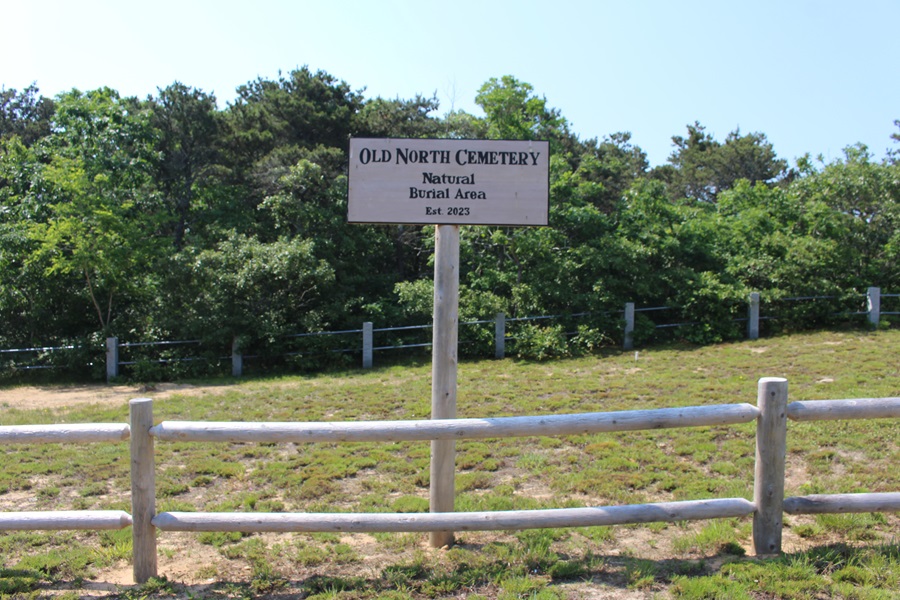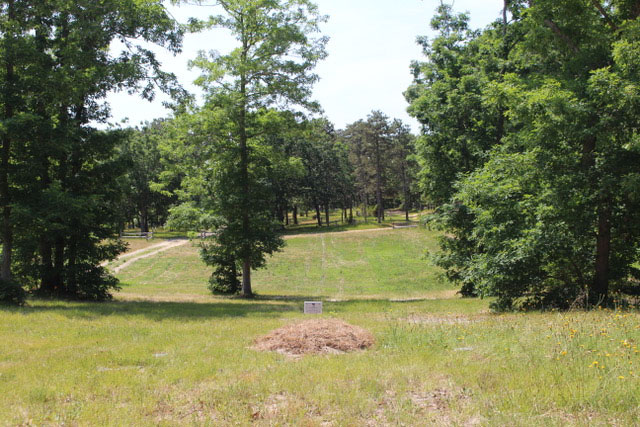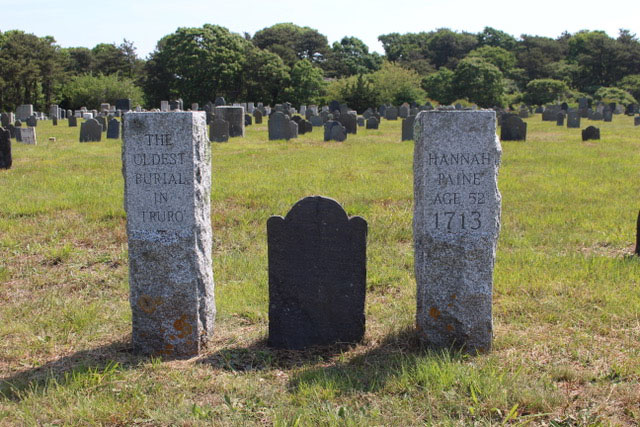Tucked away at the southernmost end of the Truro’s Old North Cemetery, a small tract of land is girded by a split-rail fence where a sign reads: “Old North Cemetery, Natural Burial Area, Est. 2023.”
The site is the latest among a growing number of cemetery grounds across the Outer Cape to allow natural burials — a form of disposition that allows the body to decompose naturally. No formaldehyde is used to embalm it, and no concrete vaults enclose the casket, which is, by the way, biodegradable. A small, unimposing headstone is chosen to signal the return of the body into the soil.
In 2020, Provincetown passed regulations allowing natural burials in Alden Cemetery. Wellfleet followed suit two years later at Pleasant Hill Cemetery. But Eastham Town Clerk Linda Sassi says she is not aware of natural burial sites in that town’s municipal cemeteries. Evergreen Cemetery, a private burial ground off Route 6 in Eastham, does not allow natural burials either, says Kathleen Fogg, president of the Evergreen Cemetery Association.

Truro’s site looks a little different than those in the other towns. In Provincetown, a natural burial, also known as a green burial, can be done at any plot in Alden Cemetery, says commissioner Robert Sweetman. In Wellfleet, about 40 plots distributed throughout Pleasant Hill are reserved for natural burials. But in Truro, the idea is to separate the land and let it grow wild.
“Part of the decision to keep the site separate from the rest of the cemetery is that you can have an area that is clearly untamed,” says Holly Gardner, chair of Truro’s cemetery commission.
Since it is still new, the site looks a lot like the rest of the cemetery. Aside from a mound of soil that marks the site’s first burial, a few clumps of grass sprout here and there. “Right now, it’s kind of sparse,” Gardner says. “But if you come back in 100 years, all you’ll see is a field.”
To get the show on the road, Gardner is considering adding some plantings. The commitment to wilding is, she says, “more of a philosophy or an aesthetic thing than it is a requirement.”
When the cemetery commissioners in Wellfleet first began discussing green burials at Pleasant Hill, they also talked about creating a segregated burial site at the back of the land, says commissioner David Agger. But they ended up designating newer sections of the cemetery for green burials. So far, he says, there have been just two green burials there, but 18 more plots have been sold.

The popularity of green burials in Massachusetts is on the rise. There are currently 60 cemeteries across the state that allow them — that’s more than double the number there were in 2021.
But people still feel uneasy about the practice. Cemetery commissioners have listened to some of those worries, but they aren’t borne out by the facts. One wrong idea is that natural burials could have an adverse effect on groundwater quality. Because natural burials do not entail the typical concrete vaults used to hold the body and support the ground, some worry that runoff will leach into the groundwater, Agger says.
“If you have ever lived in a house that had a basement, you know that concrete floors do not keep the water in or out,” Agger says.
In fact, traditional burials may be more cause for concern, considering the amount of formaldehyde that goes into embalming. According to the Green Burial Council of California, which advocates for natural burials and certifies cemeteries, traditional burials across the U.S. bury 4.3 million gallons of embalming fluid per year.
Massachusetts has not yet established a consistent position on the subject. A Mass. DEP notice on setback recommendations for green burial sites says, “once properly located and with the proper setback from potable water sources, a green burial site will offer an even lower potential to contaminate groundwater than a conventional cemetery.” Yet the state requires larger setbacks for green burials than it does for traditional burials: traditional graves must be situated at least 300 feet from a private well, while natural burials require 750-foot setbacks.
Gardner says that another obstacle to green burial is inertia: “A lot of people feel that traditional burials are how we’ve always done it, and why should we do it differently?” Really, we should think of it this way, she says: traditional burials, replete with formaldehyde and concrete vaults, are a recent invention. Before the Civil War, everyone had what we’d now call a natural burial, with bodies wrapped in fabric shrouds placed in pine caskets.

It wasn’t until nearly the end of the 20th century that care of the dead migrated out of the hands of family members, and embalming became a trend. The National Funeral Directors Association formed in 1882 to promote the practice — one that was developed on the battlefields of the Civil War so that soldiers could be sent home for burial.
In 1930, the German American owner of a concrete business, Wilbert Haas, toured the tomb of King Tut in Egypt. The visit spurred an idea — encasing caskets in concrete vaults could be marketed as a way to increase burial density and in turn revenue potential for cemeteries. Haas also sold the idea that concrete vaults would protect the dead against the elements and the living against germ-ridden souls — a vestige of the bygone miasma theory, which in the mid-1800s was displaced by germ theory. Then there were graverobbers. Haas put forward his vault idea as a safeguard against graverobbers, too, Gardner says.
“I suppose a natural burial could make the job easier for a graverobber,” Gardner says. “Though we are right across the street from the police station.”
People bought the new ideas. Concrete vaults became a matter of course by the mid-20th century. According to the Green Burial Council, each year more than 1.6 million tons of reinforced concrete and another 14,000 tons of steel are used for burial vaults and foundations.
The Ramsey Creek Conservation Burial Ground in Westminster, S.C. was the first burial site in the U.S. to be devoted exclusively to green burials. Now there are more than 443 green burial sites across the country, accounting for about 5 percent of total burials, according to the Green Burial Council.
That number doesn’t include centuries-old graves, of which there are many in Old North Cemetery. On a tour of the grounds on a sunny June day, Gardner took a reporter to see the cemetery’s oldest grave, that of Hannah Paine, buried in 1713. At the opposite end of the cemetery is the mound of dirt marking the site’s return to natural burials.
“It’s so simple,” Gardner says. “Why wouldn’t you give your body back to the Earth?”
